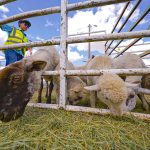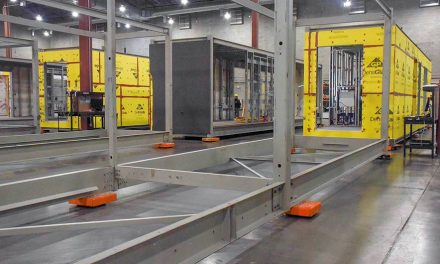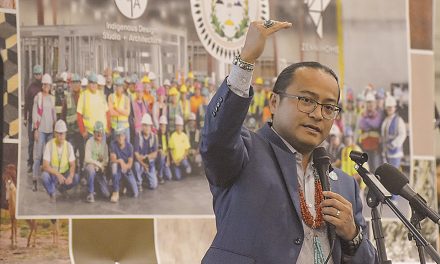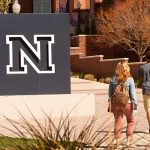
Letters: Climate change demands response
This year some of us celebrated the Treaty of 1868. Some celebrated Navajo Transitional Energy Company’s move to complete participation in the Four Corners Power Plant. Some celebrated the cancellation of the Department of Fish and Wildlife’s horse hunt. Most of us have some knowledge of our Navajo Nation Fundamental Laws (found in Title 1 of the Code). Our Fundamental Laws serve as a useful standard by which to judge the cultural and environmental ramifications of climate change.
Human knowledge that increasing CO2 was due to human activities and that it would cause a global warming was established by 1979. By 1988, Jim Hansen, et al, claimed detection of a human-caused component to the planet’s warming trend. What we know is the annual global average carbon dioxide concentration at earth’s surface for 2017 was 405.0 ppm, which is 2.2 ppm greater than in 2016 and the highest in the modern atmospheric measurement record and in ice core records dating back as far as 800,000 years, causing the earth to warm faster than at any time since the end of the dinosaurs. Navajo Nation leadership for decades has used human-made laws to obfuscate and circumvent the Fundamental Laws.
The Navajo Nation Council at one time declared that Fundamental Laws and tradition is only what the Council decreed them to be. How we are responding to our free-ranging horse problem illustrates what we are doing about climate change. We have about 40,000 free-ranging horses on our lands and if we do nothing, the population is expected to double in just five years. We know today the population has vastly exceeded the ecosystem to support them, yet we are essentially doing nothing about it. The only thing we have committed to is lack of action.
We could solve our horse problem and restore our wild places, wildlife, and our rangelands within one lifetime. The problem of climate change is unlike what human beings have faced before. Climate change exhibits two features that make it different from other environmental problems, not just in degree but in kind. And these differences have important public policy implications. First, because CO2 is hard and slow (due to their extreme chemical and photochemical stability) to remove from the atmosphere — the damages are cumulative.
We need to reduce the amount of man-made CO2, as much as possible, as quickly as possible, starting now. The second difference is that climate change is largely irreversible. Both these facts about climate change set it apart from other environmental problems. They also, for what it’s worth, set it apart from social problems like poverty, housing, or poor health care. A vast majority of people on earth do not understand the problem at hand, let alone what it will take to deal with it. Climate change will bring about climate “winners and losers” across the planet. Unfortunately, almost all projections for the Southwestern U.S. show an outcome that our homeland is in the “losing bracket.”
If the rise is to 2 degrees Celsius (likely from all indications) our homeland will suffer droughts and heat waves and eventual “hot dust-bowlification” due to low soil moisture. If the rise is above 3 degrees Celsius, large parts of our homeland will likely transition to a version of Death Valley and be uninhabitable.
Any rise above 4 degrees Celsius is simply catastrophic for our homeland. Coming back to our homeland, our ancestors did not create a song based upon, “I am going back to Mother Earth to live the way I want to live” or “I am going back to Mother Earth to live the way I desire to live.”
They knew better, the song says, “I am going back to Mother Earth to live the way I’m supposed to live.” Our leaders in 1868 did what they could to keep us together and bring us back to our homeland between the Four Sacred Mountains. They knew other Native peoples were being scattered and relocated from their original homelands by the conquerors. Currently, we are facing another existential threat. The question is: How will today’s leaders respond?
Glen Manygoats
Flagstaff, Ariz.
County can work together
I am gratified that federal Judge (David) Nuffer recently ordered San Juan County, Utah, to put me back on the ballot as a candidate for county commissioner. I am looking forward to campaigning, to meeting with voters to hear what issues they think the county commission should work on, and what services are needed to improve their quality of life. I will work to help unify and bridge the differences in our communities.
The Diné, Ute, and the pioneer descendants are all people of faith. The descendants of the pioneers left their homelands to settle where the higher power told them to go. Faith and Native American beliefs are the cornerstone of life here in San Juan County. We can use these values for a foundation of mutual respect and understanding to help us come together to work on for our common goals on difficult issues facing the commission in San Juan County. In Diné culture, recognizing and appealing to clan relations creates an instant connection of people.
Anglos and Native Americans have different ways of creating community, but in a broader sense, connections to relatives, family members, clan members, and connections to friends and neighbors are the basis for strong foundations for our different communities. I believe all residents, no matter our heritage or political affiliation, want the county leadership to work for a high quality of life for all residents, safe communities to raise families, and a clear-eyed approach to county expenditures.
These are not race or partisan issues. We can work toward these goals together. We can’t continue to live as people traveling on opposite sides of the same canyon. We share similar objectives and we are trying to reach the same place, but there is a division that exists that doesn’t have to. We can get past long-standing tension between Native American and Anglo communities in our county — working towards shared goals for the benefit of all of the county’s citizens is a good place to start.
Willie Grayeyes
Tonalea, Ariz.
Election law needs overhaul
By asking pertinent questions to the Navajo Nation Election Administration, I have concluded the Navajo election law needs paying attention to. Case in point: This office is governed by the Navajo Nation Council.
They are not independent from the body that are elected and that is a conflict of interest. It is puzzling to me why our election law has not changed. We are in a century where human thinking has advanced, yet we are still fiddling with antiquated laws that don’t advance us.
If our Navajo Election Administration is independent from the legislative body (i.e., New Mexico Secretary of State), then you can be assured of a democratic process in election. With positive reinforcement of Navajo Nation election law, the Navajo candidates will be transparent and accountable. Moreover, the campaign reports from each candidate will have public access. You and I will know how candidates spend their monetary contributions and where their source of funding came from.
Don’t you know that the top two or three contenders in the presidential race can be disqualified if they received donations from the outside, or from Navajo Nation enterprises? For example, let us say the Navajo Agricultural Products Industry donated bags of potatoes or flour to a presidential candidate for fundraising, or Hilcorp Corporation donated $10,000 to their candidates that favor oil drilling. That would penalize that candidate or even disqualify him or her. Election is serious business. It places voters to the forefront when they cast their ballots. Election works if there are no collusions.
Ray Begaye (Former New Mexico state representative)
Shiprock, N.M.
Car seat project seeks donors
On behalf of the Winslow High School Class of 1964, we extend heartfelt appreciation to Navajo Times reporter Pauly Denetclaw for researching and writing two articles that brought to “the public light” these horrible facts:
- When a Navajo baby is involved in a vehicle accident, they’re going to perish at a 40 percent higher rate than non-Indian babies because
- Only 27 percent of Navajo babies are restrained in an infant car seat, compared to the 55 percent usage/ownership rate of Arizona’s non-Indian babies.
After reading Denetclaw’s articles on Dec. 17, 2017, we founded the Navajo Newborns Need Safety Seats “give-back project” with a goal of persuading little people and big companies to go online and purchase a (specified) very good infant car seat, which would then be donated to an expectant Navajo woman in the border town — our birthplace — of windy, albeit lovable, Winslow. Our goal is to get 100 (specified) infant car safety seats purchased and donated before Friday, Aug. 9, 2019, which is the date of our 55th (unofficial) reunion at the Navajo-owned Falcon Restaurant, ground zero for Navajo Newborns Need Safety Seats.
So far, with the help of our media friends to spread the word, 14 infant car seats have been purchased and free-shipped to Joe Estudillo, general manager of the 63-year-old restaurant. Amazingly, three of the infant car seats came from White Plains, New York, resident Patrick Boustead, after he read online a Navajo-Hopi Observer newspaper article describing our project. And 3,000 miles away, Mount Shasta, California, resident Karen Pautz, who’s executive director of (Siskiyou County) 1st Five Children and Families Commission, was moved to replicate Boustead’s concern, as was Rancho Mirage, California, resident, Hobert C. Wehir, who purchased the 14th infant car seat.
On the corporate side, Walmart in Winslow, Arizona, has donated four infant car safety seats, but we’re really after the Boeing Company, Lockheed Martin and Wells Fargo, to name but a few, to “step up” and respond in a big-time, generous way. For example, we’ve asked the Newell Company, makers of the (specified) very good infant car seat, to sponsor a display advertisement in the USA Today and Wall Street Journal newspapers. In a perfect storm, and we think one’s already in motion, two PGA champions, Window Rock’s Notah Ryan Begay III and Chinle-born Rickie Fowler, will join Winslow’s Joe Estudillo and become honorary chairmen of our project.
If this happens, especially on our project’s Facebook page/website, then our project will explode. Can you imagine Mr. Begay and Mr. Fowler asking their PGA buddies, like Sergio Garcia of Spain, and Miguel Cabrera of Argentina, to “invest” around $100 in a Navajo baby’s survival who, you never know, could grow up to be the manager of a Boeing propeller repair factory located in Window Rock? The Winslow High Class of 1964 would also like to thank the Winslow Indian Health Care Center, under the leadership of its executive director, Sally Pete, for identifying expectant, Winslow-area Navajo women to receive the life-saving devices, along with the (crucial) training, motivation and education necessary for successful implementation.
And in a most welcome, completely surprising fashion, I received an email from Dr. Mary Ellen Rimsza, a Phoenix pediatrician who’s also chairwoman of the Arizona Child Fatality Review Program.
Rimsza’s email was a request for specific information on Navajo Newborns Need Safety Seats, informing us that our project will be included in their 25th annual report, which will be published in November. How sweet it is!
Jerry Sanchez
Redding, Calif.
Voters, study the issues!
I sincerely thank all the people within the Kindalichee, Ganado, Cornfields, Steamboat, and Jeddito chapters that voted for me during the recent primary election for the Navajo Nation Council delegate position. Ahe’hee. Going into the general election in a few months, I encourage everyone to study the candidates and their positions
. For example, one candidate, who is also a member of the Navajo Government Development Commission, favors dismantling the voices of the 110 local chapter governments and replacing them with 24 regional governance centers. The other candidate talks economic development but her primary agenda item is the Grand Canyon Escalade.
My people, it is important to study and know the issues that affect and impact our local chapters. I wish both candidates, Mr. (Vince) James and Ms. (Jennifer) Taliman, the best. Serving the people is an honor and going forward, I encourage our two candidates to truly listen to our elderly and youth from all five chapters regarding all issues.
Our communities want leadership that listens to the people while bringing about better quality of life for generations to come. Again, ahe’hee for your support and votes. May you all walk in beauty.
Caleb Roanhorse
Ganado, Ariz.
Bipolar disorder and DV
The articles regarding domestic violence are excellent and educational.
There is another type of domestic violence that rarely gets attention but may actually be the source of the domestic violence problem in some cases.
Bipolar disorder is a psychological and neurological disease. Symptoms include poor impulse control, anger control issues, depression, addiction, highs and lows of moods, manic episodes, etc. It is treatable and it requires an evaluation to determine if the disease is bipolar disorder.
The challenge is getting the abuser to get help. The abuser is often not seen as a victim but with this disease a person can feel trapped and is unable rather than unwilling to change behavior. Treatment involves taking medication, diet and exercise. Recommended psychotherapy is cognitive therapy, which is a process of changing one’s perception or becoming aware of alternative views that are more functional and thereby becoming free from feeling trapped.
A person or family does not have to suffer with domestic violence. I believe there is a correlation between domestic violence but research needs to be done for this area. In my work as a therapist I would explore with the family the symptoms and dynamics involved with domestic violence and I usually find components of the bipolar disorder.
Sharon Manuelito
Window Rock, Ariz.
To read the full article, pick up your copy of the Navajo Times at your nearest newsstand Thursday mornings!
Are you a digital subscriber? Read the most recent three weeks of stories by logging in to your online account.








 Highway 264,
Highway 264, I-40, WB @ Winslow
I-40, WB @ Winslow